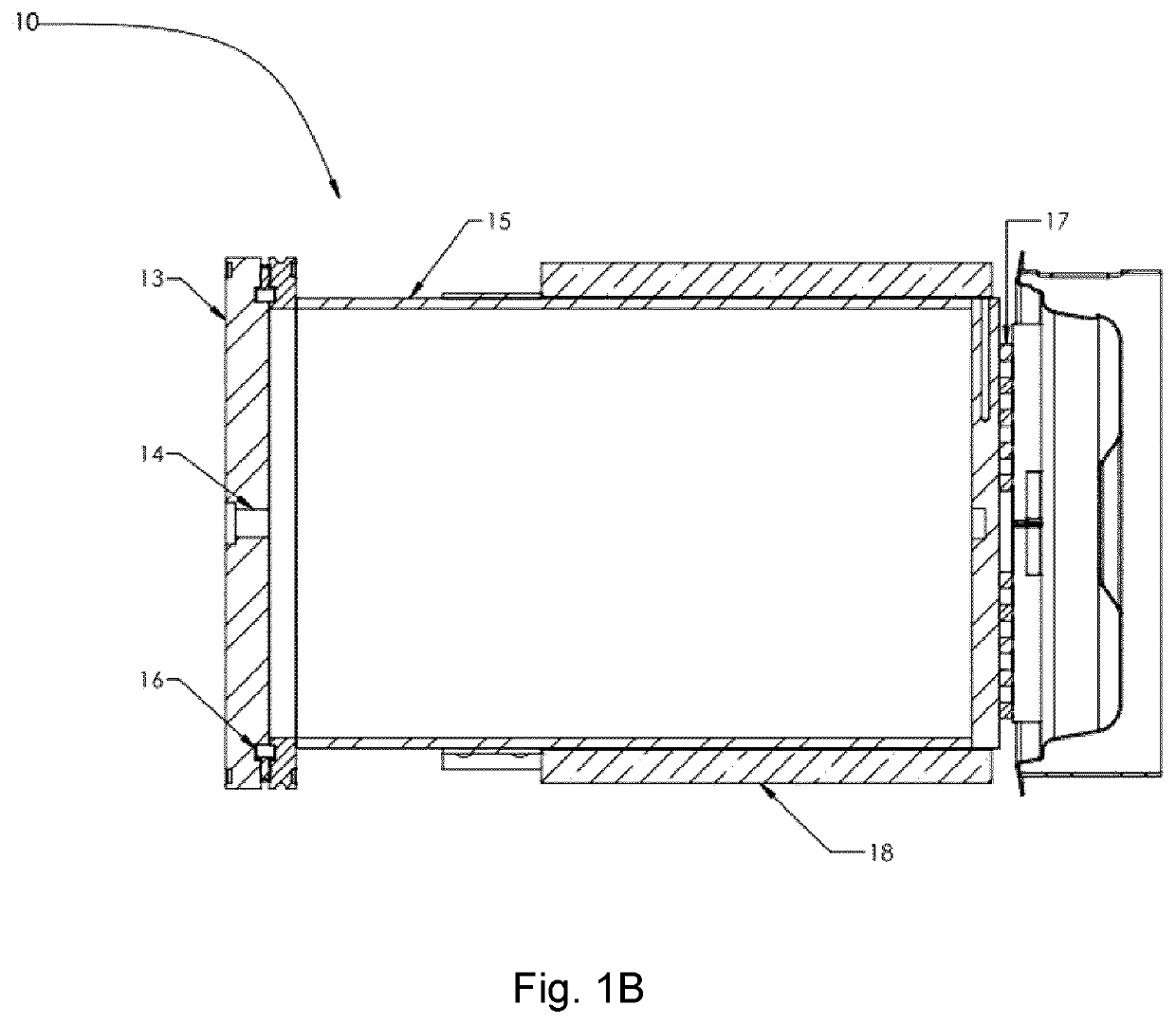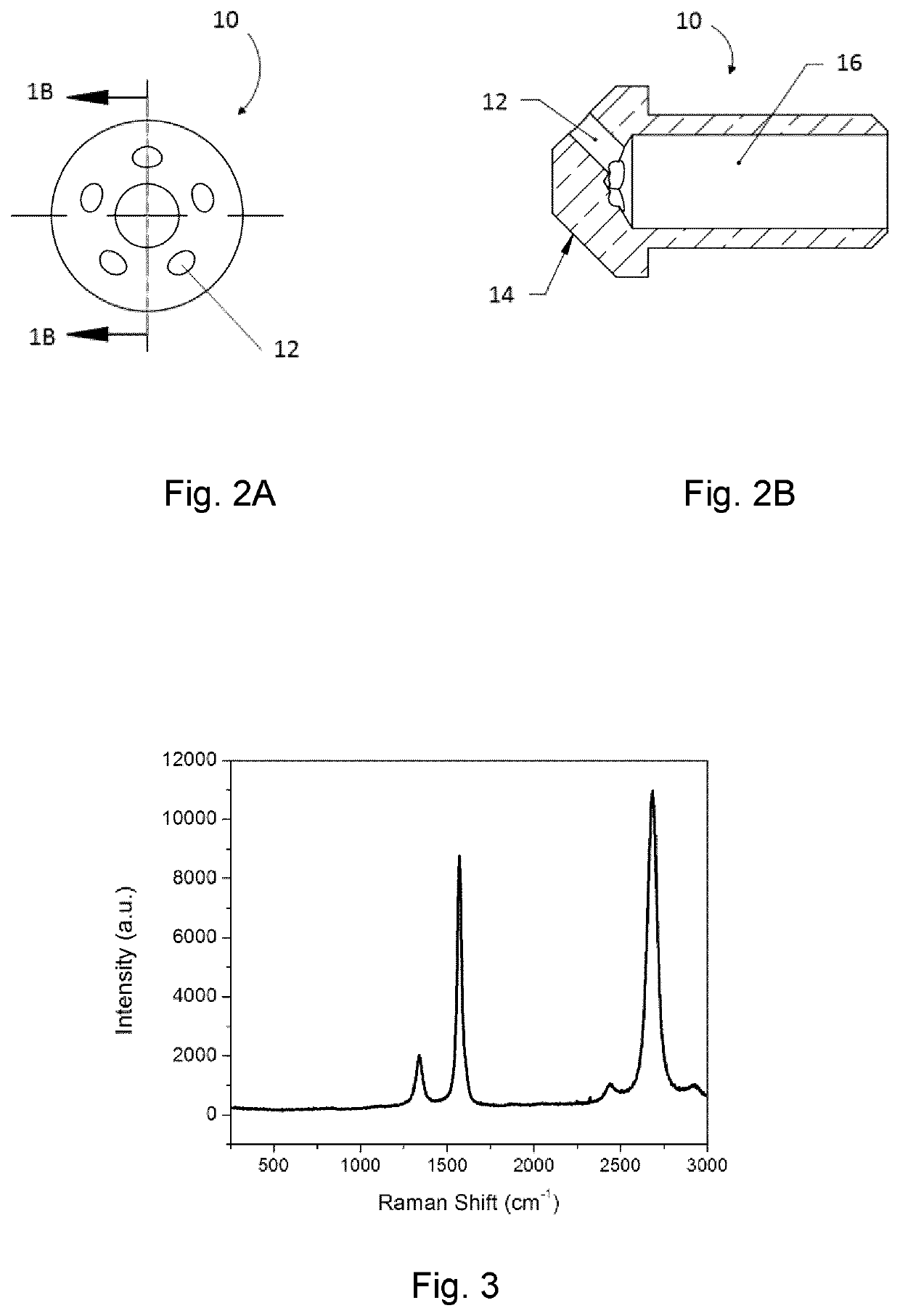Graphenic carbon nanoparticles having a low polyaromatic hydrocarbon concentration and processes of making same
a polyaromatic hydrocarbon and graphene technology, applied in the direction of graphene, carbon compounds, nano-carbons, etc., can solve the problems of noxious and carcinogenic pahs, which cannot reach the electrical conductivity value, and can never be produced in quantities necessary for bulk applications
- Summary
- Abstract
- Description
- Claims
- Application Information
AI Technical Summary
Benefits of technology
Problems solved by technology
Method used
Image
Examples
example 1
reatment for Lowering Polyaromatic Hydrocarbon Content of Graphene Nanosheets
[0244]In one exemplary embodiment, crumpled graphene nanosheets powder produced using an ICP plasma torch using methane as precursor (as described in U.S. provisional application No. 62 / 437,057) is treated in a dry process to remove the PAH. Prior to the gas-phase (dry) process, the produced crumpled graphene powder contains 0.16% wt. of PAH (as measured by Soxhlet extraction with toluene) and has a B.E.T. specific surface area of 302 m2 / g.
[0245]Referring now to FIG. 1A, the enclosure (oven) comprises a port (11) for injection of a mixture of gases as well as a port (12) for exhaust of a mixture of gases containing decomposed PAHs. Referring now to FIG. 1B, the enclosure comprises a flange (13) for containing both ports (12) and (13). Another port (14) is provided in the enclosure for inserting a shaft to mix the powder during the thermal oxidative treatment. The enclosure is contained in walls (15), compri...
example 2
[0251]In a second exemplary embodiment, a second type of oven is used to remove the PAH. The second oven used is a kiln furnace from Paragon with natural convection; the flow of air (O2 / N2, 21 / 79% by volume) is not forced inside but results from natural convection due to the high and low temperature respectively inside and outside of the oven. Two circular openings (with diameters of about one half inch) are located on the side of the oven to allow natural convection to circulate and renew air in the oven. For this example, graphene nanosheets produced using an ICP plasma torch using methane as precursor gas (as described in provisional application 62 / 437,057) is treated in a gas-phase process to remove the PAH. For this example, the as-produced graphene contains 0.50% wt. PAH (as measured by Soxhlet extraction with toluene) and has a B.E.T. specific surface area of 288 m2 / g. The treatment is carried out at atmospheric pressure.
[0252]The temperature-time profile for this oven is as ...
example 3
xample
[0255]Using the same as produced crumpled graphene powder from example 1 (PAH concentration of 0.16% wt. PAH, B.E.T. specific surface area of 302 m2 / g) and subjecting it directly (without the thermal oxidative treatment) to Soxhlet extraction with toluene, the final B.E.T. specific surface area was 329 m2 / g. Knowing that the precision of the specific surface area measurement is about ±10%, there is no significant change observed.
[0256]Following the Soxhlet extraction step (wet process), a change in the tap density of the crumpled graphene powder was observed. The tap density increased from 0.04 g / cm3 to 0.11 g / cm3. This supports that a wet process leads to an increase in tap density.
[0257]Subjecting this Soxhlet extracted sample (having a B.E.T. of 329 m2 / g) to a subsequent heat treatment step in pure argon atmosphere (at about 300° C. for 1.5 h) did not further increase the B.E.T. specific surface area. The further treated sample had a final B.E.T. specific surface area of 32...
PUM
| Property | Measurement | Unit |
|---|---|---|
| tap density | aaaaa | aaaaa |
| tap density | aaaaa | aaaaa |
| tap density | aaaaa | aaaaa |
Abstract
Description
Claims
Application Information
 Login to View More
Login to View More - R&D
- Intellectual Property
- Life Sciences
- Materials
- Tech Scout
- Unparalleled Data Quality
- Higher Quality Content
- 60% Fewer Hallucinations
Browse by: Latest US Patents, China's latest patents, Technical Efficacy Thesaurus, Application Domain, Technology Topic, Popular Technical Reports.
© 2025 PatSnap. All rights reserved.Legal|Privacy policy|Modern Slavery Act Transparency Statement|Sitemap|About US| Contact US: help@patsnap.com



